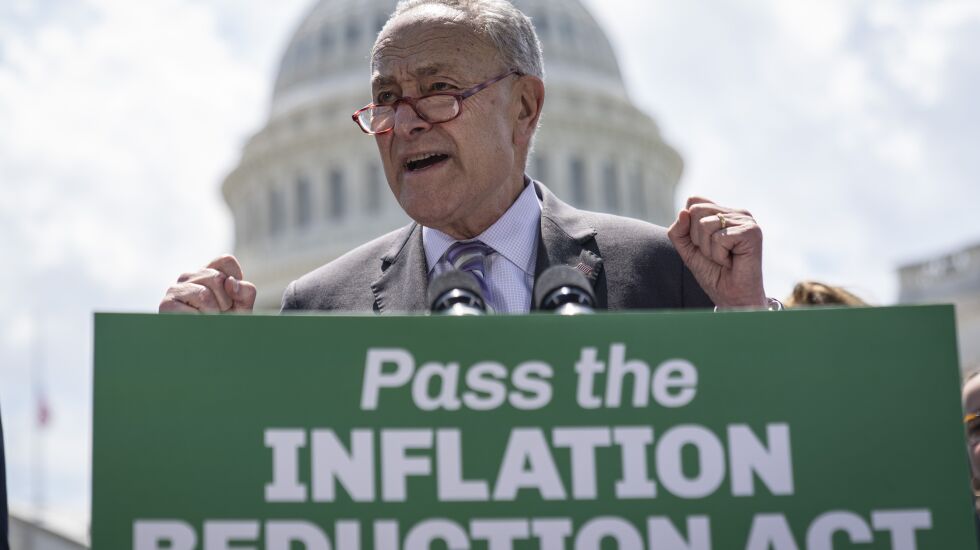
If the Inflation Reduction Act passes in Congress, it will be particularly good news for Illinois — provided the state takes full advantage of it.
The federal bill, a smaller version of President Joe Biden’s Build Back Better Act, provides $369 billion for energy security and to combat climate change — the biggest single investment the government has ever made in fighting climate change. Some of the money will be distributed via grants. Illinois, unlike most states, already has set up projects that could qualify for those grants.
Last year, Illinois enacted the Climate & Equitable Jobs Act, which set the goal of 100% carbon-free power by 2045 and 100% clean energy by 2050. Because Illinois passed the law last year and has been thinking about it for several years, it has projects on tap that are more than shovel-ready and primed for federal dollars.
“As CEJA sunsets coal plants and transitions from fossil fuel energy production, this bill would supercharge that with money and incentives,” Brian Gill, federal policy director of the Illinois Environmental Council, told us.
To take full advantage of the Inflation Reduction Act, once it is enacted, Illinois should apply for money as quickly as possible and make sure there is sufficient staff at the Illinois Environmental Protection Agency and the Department of Natural Resources who are ready to fill out grant applications and get the money in the door.
Late on Thursday, Arizona Democratic Sen. Kyrsten Sinema, the last Democratic holdout, said she is ready to “move forward” on the bill, which would give it enough votes to pass. No Republican senators have said they would vote for the bill.
That’s good news. America already is suffering from a continuous stream of billion-dollar disasters, including flooding, heat waves, wildfires, drought and stronger storms.
To reduce the frequency of such disasters, the Inflation Reduction Act would provide money to move power plants to renewable energy; boost the transition to electric vehicles; make homes and other buildings more energy efficient, cleaner and more cost-effective; tackle the problem of polluted air and water in some communities; and generate thousands of well-paying green jobs.
The $739 billion bill also includes provisions on expanding the Affordable Care Act; paying down the national debt; prescription drug pricing reform; increased IRS funding; and changes in tax policy and tax credits. As part of the compromise, it also includes measures environmentalists oppose, such as more leases for offshore oil and gas drilling. But the climate change provisions are the biggest part of the bill.
The 725-page bill, hammered out last week in a behind-the-scenes negotiation between Senate Majority Leader Chuck Schumer, D-N.Y., and Sen. Joe Manchin, D-W.Va., is not as sweeping as its predecessor, Build Back Better.
Among the things we’re sorry to see dropped is the Civilian Climate Corps, which is patterned after the Depression-era Civilian Conservation Corps. The new CCC would have employed thousands of young people to help protect the country’s natural areas and maintain its public lands.
But if enacted, the bill could cut national greenhouse gas emissions by 37% to 41% by 2030 compared with 2003 levels. That would put the United States within striking range of reductions it agreed to in the 2015 Paris Agreement on climate change.
Naysayers are claiming the United States can’t afford to enact the Inflation Reduction Act.
But at a time when the damaging effects of climate change are already upon us, we can’t afford not to.
The Sun-Times welcomes letters to the editor and op-eds. See our guidelines.







